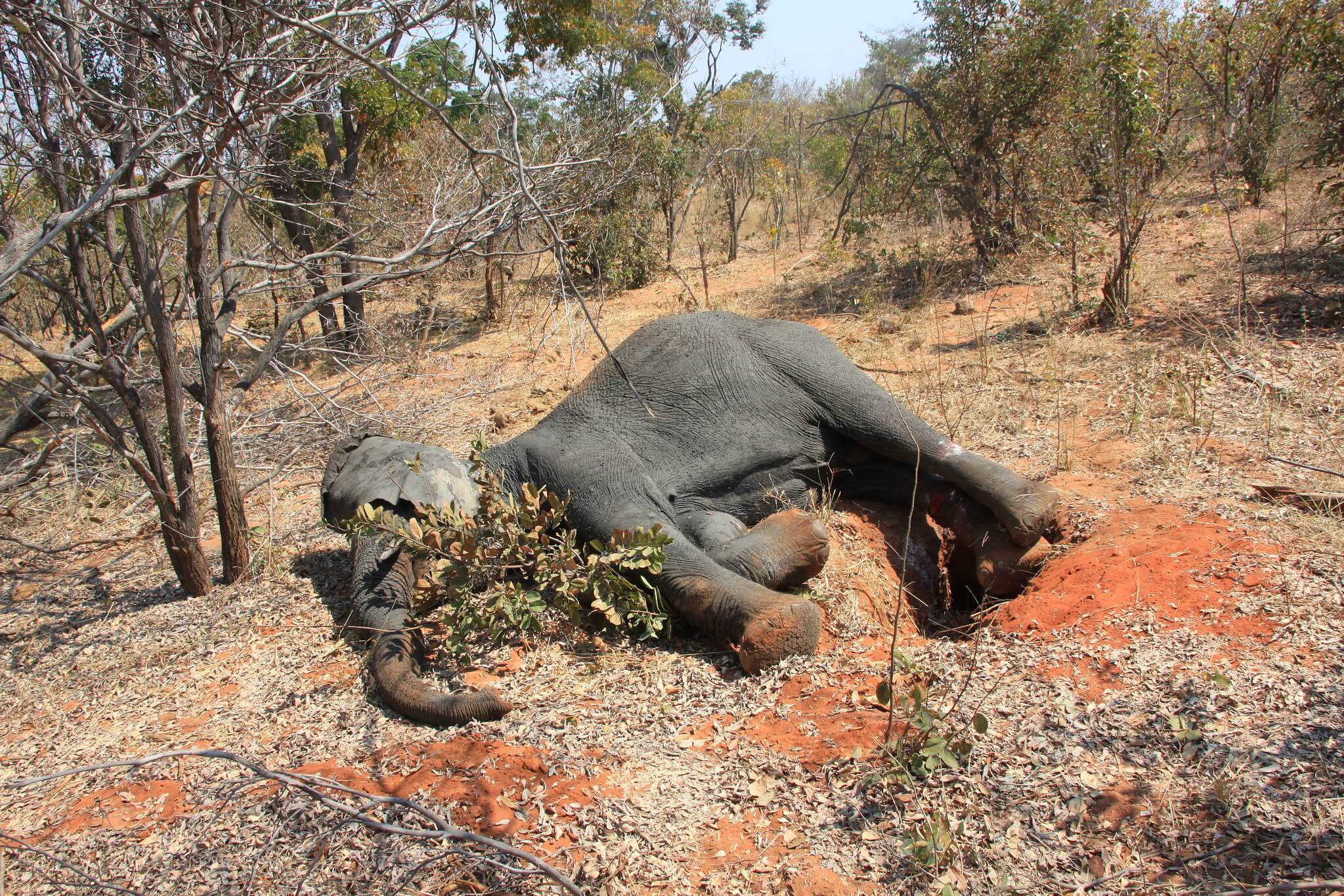Many of the diseases in Sub-Saharan Africa are zoonotic, meaning they can be transfered across species between wildlife, domestic animals, and in some cases humans. As most of these diseases are natural and serve to regulate wildlife populations or occur when environmental factors are favorable for that disease. The Victoria Falls Wildlife Trust screens for all diseases, and where necessary, assists veterinary and wildlife authorities in preventing transmission of the disease.
Disease Screening
The Trust works together with the local wildlife authorities and the Department of Veterinary Services, Wildlife Unit, to routinely test wildlife for diseases; screening for those that have the ability to cause high rates of mortality and/or infection. When wildlife are immobilised for: wildlife research (such as for the attachment of a satellite tracking device), wire-snare removal, or any other human-inflicted injuries, samples such as blood, tissue and faeces are routinely taken for analysis. If a wild animal dies and the cause of death is unknown, the carcass is brought in to the laboratory for a post mortem. Samples of all organs and tissues will be taken for histo-pathology in order to identify cause of death.
Some of the diseases that are prevalent and commonly tested include: Foot and Mouth Disease, Brucellosis, Tuberculosis, Mycoplasma, Distemper, Ehrlichia, Leptospira, Rabies, Theilleria, Anthrax, Lumpy Skin Disease African Swine Fever, to name a few.
The Trust laboratory also tests for parasite loads, toxins and screens for blood infections that may be affecting animal health.
The laboratory also samples domestic animals as well as wildlife. As many of the diseases that affect wildlife are transferable to domestic animals, one of the easiest ways to monitor disease prevalence is to analyze samples taken from livestock, cats and dogs. The risk of transmission of disease between domestic animals and wildlife is high in areas such as Victoria Falls, where domestic animals, and livestock often interface with wildlife. Regular, and targeted disease surveillance is important to reduce the transmission of disease between domestic animals and wildlife.
Regular and targeted disease surveillance is important to reduce transmission between domestic animals and wildlife.
Disease Management
Disease surveillance assists veterinary and wildlife authorities with making decisions on management policies for disease containment and prevention of outbreaks. Treatable diseases can also be identified and infected animals treated. Communal lands and areas in which livestock and domestic animals are at a higher risk of infection need to have vaccinations for some of these communicable diseases.
Groundbreaking Discovery
In 2020, VFWT and Zimbabwe Parks and Wildlife Management Authority investigated a series of elephant mortalities in northwestern Zimbabwe. They were initially thought to be due to anthrax, but ultimately found to be due to septicaemia instead. Along with international team members, we now know the mortalities were associated with a little-studied bacterium. We are pleased to announce the publication of our results to the scientific community.
You can read more about the process of how this work unfolded on the “Behind the Paper” blog post written by co-author Laura Rosen, epidemiologist for the KAZA Animal Health Sub Working Group. An extract is available below:
Help us to conserve wildlife and manage disease.
Unravelling the mystery of elephant mortalities in Zimbabwe to find an unexpected culprit – a close relative of Pasteurella multocida
As winter retreated in August 2020, elephants in north-western Zimbabwe began to die. Their tusks were intact and there was no sign that they had been poached or poisoned. Elephant deaths due to anthrax at this time of year aren’t unusual in the region, so that was the thought at first. Veterinarians don’t open the carcass when anthrax is suspected to avoid contaminating the environment with anthrax spores. Instead, we take samples such as blood smears, then burn or bury carcasses if possible. When the first elephant died, it looked like anthrax. Minimal samples were taken that afternoon and the carcass was burned…

For more information about any of the diseases we screen for and the tests we provide please Contact Us.




